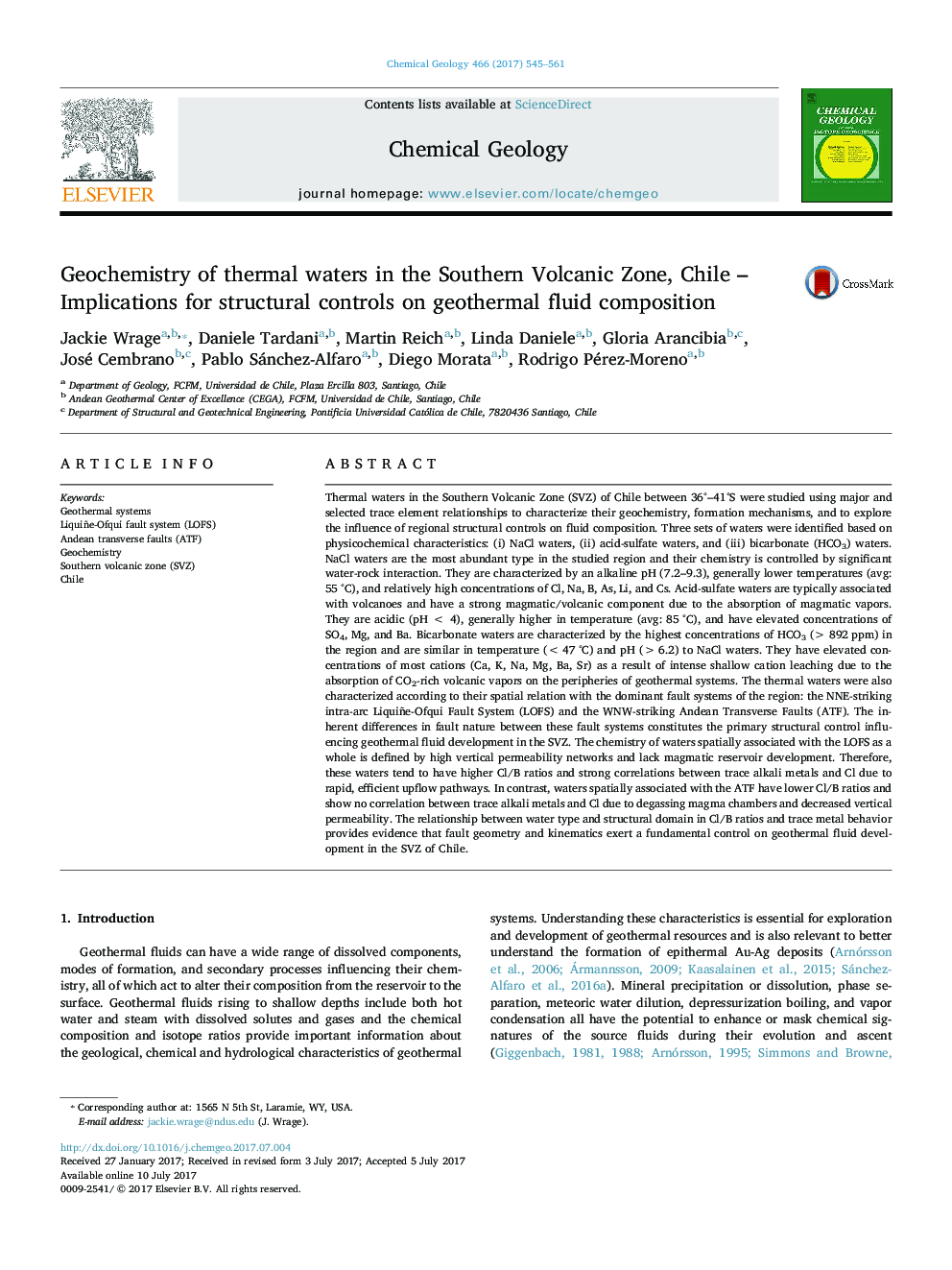| کد مقاله | کد نشریه | سال انتشار | مقاله انگلیسی | نسخه تمام متن |
|---|---|---|---|---|
| 5782856 | 1637508 | 2017 | 17 صفحه PDF | دانلود رایگان |

Thermal waters in the Southern Volcanic Zone (SVZ) of Chile between 36°-41°S were studied using major and selected trace element relationships to characterize their geochemistry, formation mechanisms, and to explore the influence of regional structural controls on fluid composition. Three sets of waters were identified based on physicochemical characteristics: (i) NaCl waters, (ii) acid-sulfate waters, and (iii) bicarbonate (HCO3) waters. NaCl waters are the most abundant type in the studied region and their chemistry is controlled by significant water-rock interaction. They are characterized by an alkaline pH (7.2-9.3), generally lower temperatures (avg: 55 °C), and relatively high concentrations of Cl, Na, B, As, Li, and Cs. Acid-sulfate waters are typically associated with volcanoes and have a strong magmatic/volcanic component due to the absorption of magmatic vapors. They are acidic (pH < 4), generally higher in temperature (avg: 85 °C), and have elevated concentrations of SO4, Mg, and Ba. Bicarbonate waters are characterized by the highest concentrations of HCO3 (> 892 ppm) in the region and are similar in temperature (< 47 °C) and pH (> 6.2) to NaCl waters. They have elevated concentrations of most cations (Ca, K, Na, Mg, Ba, Sr) as a result of intense shallow cation leaching due to the absorption of CO2-rich volcanic vapors on the peripheries of geothermal systems. The thermal waters were also characterized according to their spatial relation with the dominant fault systems of the region: the NNE-striking intra-arc Liquiñe-Ofqui Fault System (LOFS) and the WNW-striking Andean Transverse Faults (ATF). The inherent differences in fault nature between these fault systems constitutes the primary structural control influencing geothermal fluid development in the SVZ. The chemistry of waters spatially associated with the LOFS as a whole is defined by high vertical permeability networks and lack magmatic reservoir development. Therefore, these waters tend to have higher Cl/B ratios and strong correlations between trace alkali metals and Cl due to rapid, efficient upflow pathways. In contrast, waters spatially associated with the ATF have lower Cl/B ratios and show no correlation between trace alkali metals and Cl due to degassing magma chambers and decreased vertical permeability. The relationship between water type and structural domain in Cl/B ratios and trace metal behavior provides evidence that fault geometry and kinematics exert a fundamental control on geothermal fluid development in the SVZ of Chile.
Journal: Chemical Geology - Volume 466, 5 September 2017, Pages 545-561